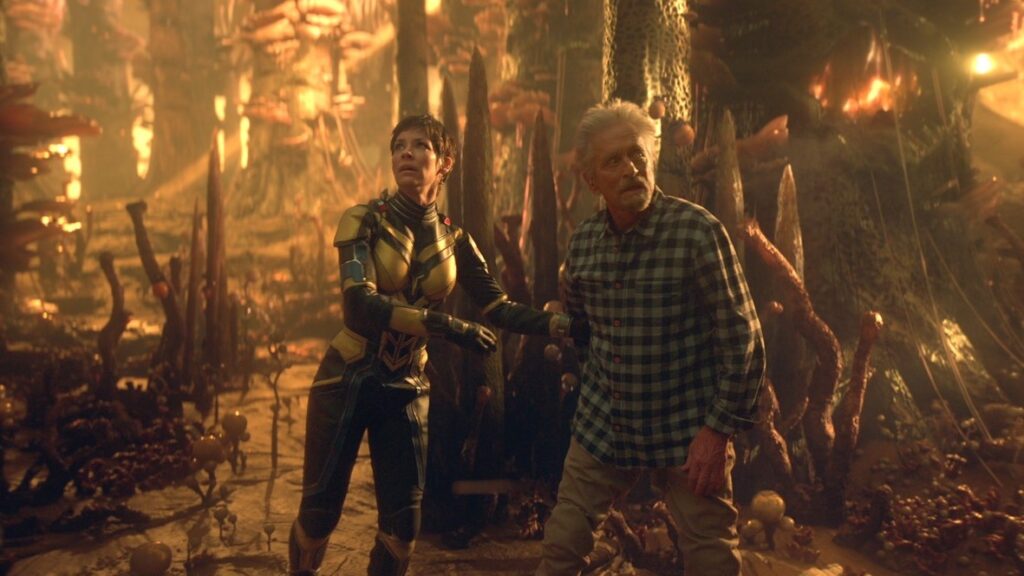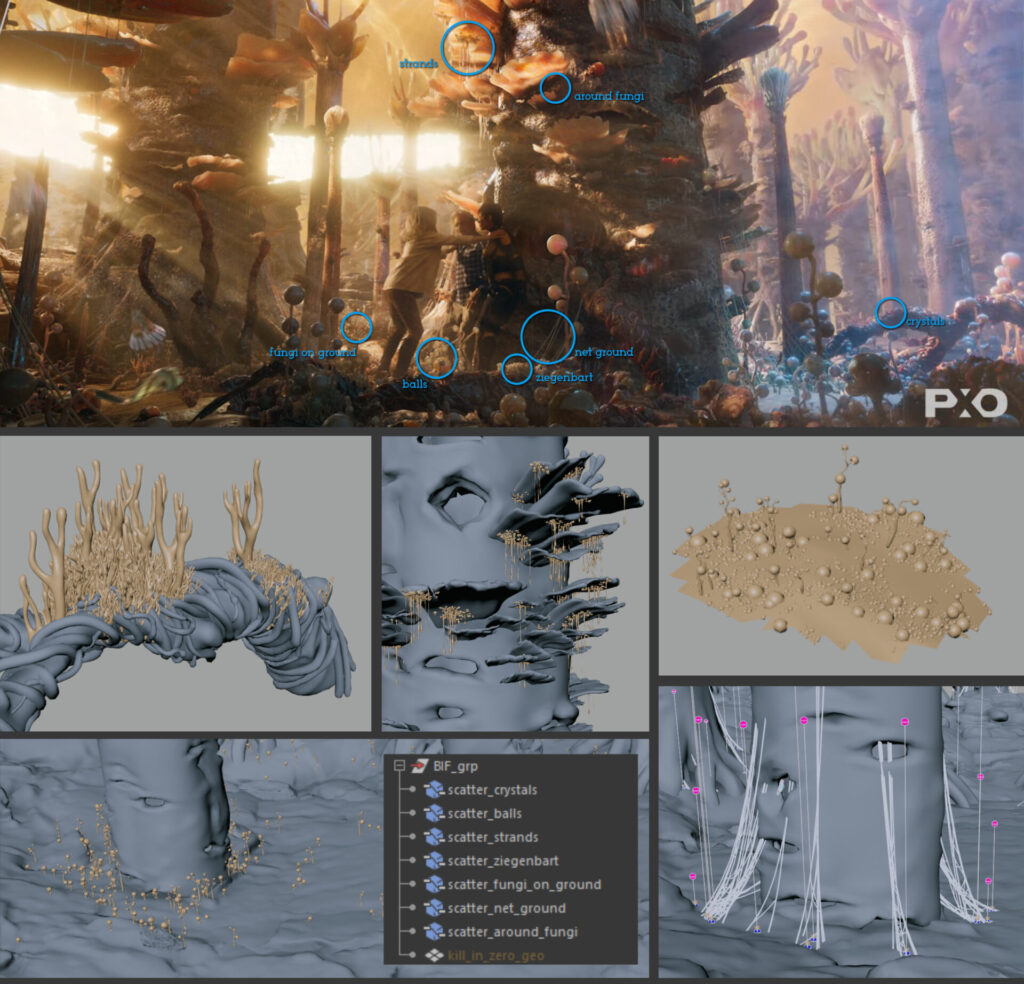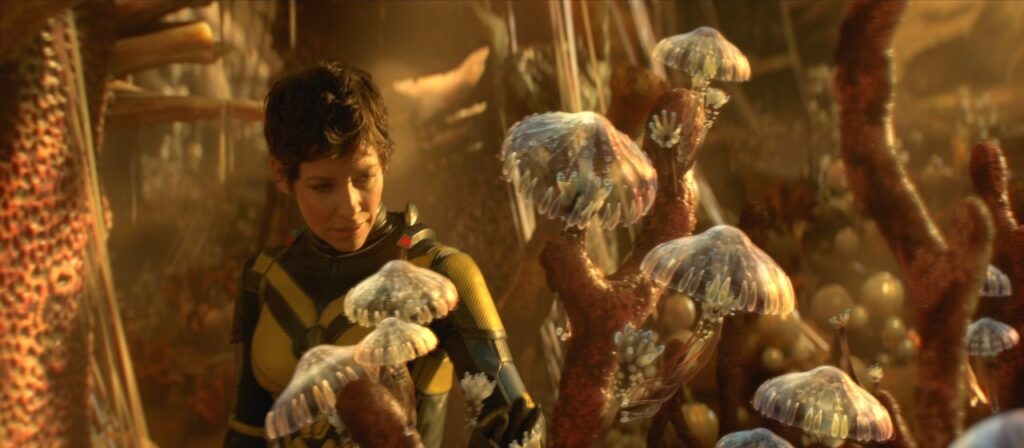Global virtual production and visual effects company Pixomondo uses Bifrost for Autodesk Maya to streamline VFX delivery on many of its tentpole projects including House of the Dragon, Shazam! Fury of the Gods, and most recently, Ant-Man and The Wasp: Quantumania.

Bifrost is a visual programming environment in Maya used to create procedural simulations and effects including smoke, fire, sand, snow or in the case of Ant-Man, procedural scattering on terrain. We spoke with Thomas Kutschera, Head of Groom CFX at Pixomondo’s Frankfurt, Germany studio, to understand how he integrates Bifrost into artist workflows.
What’s your role at Pixomondo?
I lead the team that manages the grooming work on our projects, and develops pipeline tools and workflows, aimed at streamlining productions. I’d say it’s about a 50/50 split between prepping for shows, tools and scripting, and hands on effects work.
How long have you been working with Bifrost?
I started using Bifrost two and a half years ago because of its all-in-one approach, that empowers you to do so much. At first, it took a while for artists to understand how Bifrost could fit into their workflows, but now a great community has blossomed around it – the Bifrost Addicts server on Discord is a very helpful and active resource.
What work did you handle for Ant-Man and The Wasp: Quantumania?
Pixomondo was tasked with creating the Fantastic Forest sequence, replete with its otherworldly creatures, animals, trees, and vegetation. We created the entire sequence, starting with concept art and look development and exploring the appearance and behaviors of the vegetation and creatures. This led to modeling, texturing, shading, and rigging models, then animation, compositing and lighting which was all achieved in Maya. There was so much that went into the sequence, and when you see it on the big screen, it all goes by so fast! You really want to watch it again to see all the details and minutiae of what’s in the background. It was a lot of fun..!
What made Bifrost a good tool for the Fantastic Forest sequence?
VFX supervisor, Max Riess, provided me the time I needed for R&D. I explored procedural ways to populate the trees and vegetation and Bifrost allowed me to set parameters to produce 100 trees that look the same with shared characteristics, but different in height and thickness. When you can fill a forest without having to model each individual asset by hand, it saves a lot of time. In the end, we used Bifrost to scatter everything that enriched the Fantastic Forest sequence. Every scene had different scattered elements, from nets connecting trees and the ground, to mushrooms on the forest floor, which were then added to the layout.

With everything in Maya, I developed a workflow with Bifrost and built an UI which allowed us to import layout and geometry and all the graphs with one click. We could then expose the most important parameters and define how many mushrooms we wanted, or the strength of the gravity pulling on the strands. Work was divided by artists and made easier as they didn’t have to dig into the graph itself, just manipulate the parameters. With one button, we could publish populated scenes and hand them over to lighting. This workflow allowed for very fast production of shots which look consistent, but differ in specific points of interest.

The modular approach in Bifrost helps a lot, allowing us to respond to the supervisor’s direction very quickly and efficiently. For example, if Max wanted to add or remove objects in a scene, we could quickly adjust the graph. Bifrost is very fast in the viewport, so if you have VDBs of clouds for example, the viewport representation is very accurate, which enables more time for iteration. Bifrost required more work to set up at the beginning, but it’s very flexible if you want to make specific adjustments and tweaks to refine a scene.
Overall, Bifrost is a big time-saver because you build these small compounds, and if you need them in another shot or another context, you can grab one and copy/paste it into a new graph. As Bifrost capabilities develop over time, you can still reuse elements from past shows, so you don’t have to reinvent the wheel, you can just enhance it with a few more features.
When you build Bifrost compounds, do the artists who animate and build scenes need to understand what you’re doing? Or is it a ‘what you see is what you get’ situation for them?
When I build tools, I also build a UI so artists can say for example, ‘I want to load a scatter compound’ and it gets brought into the scene, and they can automatically connect their scatter assets, get output right away, and add to the scene using a channel box with parameters to dial in. Artists don’t need to change the code in Bifrost, but if they want to, they can dive into the graph and adjust things to their needs. For me, it’s helpful to be able to improve a compound, if needed.


Is there an advantage to keeping everything in Maya?
If you are doing layout or creating the environment within Maya, using Bifrost means you don’t have to export to another department or software package. There is an advantage to keeping everything in Maya for certain types of scenes. For other scenes we might work in Houdini; it really depends on the task. For scattering, Bifrost was a great solution because everything is in one place, and you don’t lose time in shifting software packages.
What’s the environment for support around Bifrost?
I use the Bifrost Addicts Discord server because it’s a great place to ask other Bifrost users for help and solutions. I regularly look at tutorials to stay informed of new developments. You may not need a particular tool or workflow in the moment, but at some point in production, you very well might…
People share non-proprietary compounds there and answer questions. You give something and you get something which in turn expedites Bifrost development and helps to grow its user base.
You’ve been in VFX for a long time — and you’re clearly someone who stays on top of new technology. What trends are you following now?
You’re right! The first feature I worked on was The Adventures of Pinocchio, back in the 90s. It’s important to always look ahead to see what’s coming to streamline workflows. Bifrost is exciting because it’s developing so quickly. I’m currently experimenting with USD (Bifrost-USD on GitHub) and scattering in Bifrost because it’s a nice implementation and speeds up render time profoundly. It’s still fresh, but it promises big things for the future.
Bifrost is available with your Maya subscription at no additional cost. Learn how to use Bifrost today with Bifrost Bootcamp on the Maya Learning Channel.